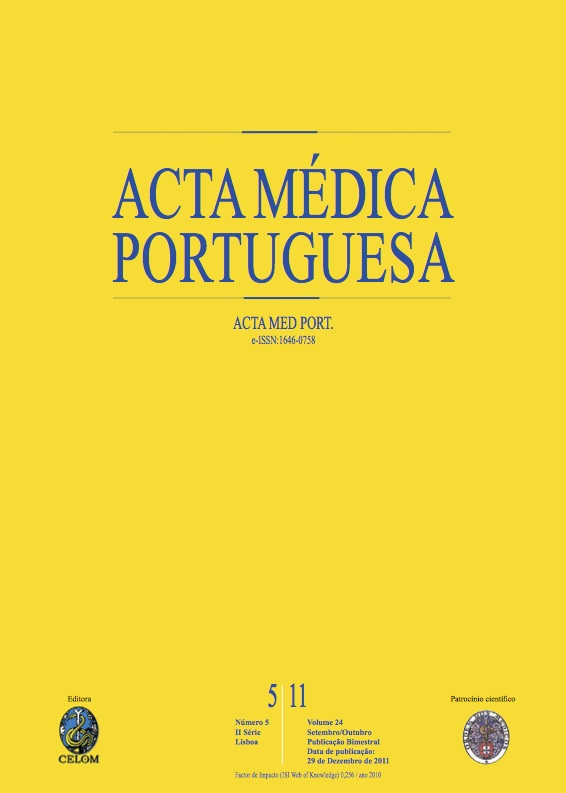Tools to evaluate potentially inappropriate prescription in the elderly: a systematic review.
DOI:
https://doi.org/10.20344/amp.509Abstract
Prescription of potentially inappropriate medication (PIM) in the elderly has gained growing attention from healthcare professionals, researchers, healthcare providers and politicians worldwide for safety issues. Taking into consideration the increased susceptibility of elderly patients to certain medicines, criteria to identify PIM and to alert professionals to prevent their prescription have been created.To gather published evidence regarding the characteristics and use of criteria to identify PIM.systematic review of studies published between 1990 and 2007. A literature retrieval using Pubmed and The Cochrane Database of Systematic Reviews was performed followed by a manual search of cited references. Cross-sectional studies using the most recent version of PIM criteria in patients aged 65 years or more were included. Studies which analyzed PIM in a single clinical condition of therapeutic class exclusively or those not attaining 75% of the quality score were excluded.the search retrieved 124 studies, being 10 of them selected for inclusion in the systematic review. The studies selected were conducted in Europe and the United States and the Beers criteria updated in 2003 were the most frequently used. Some authors, adapted PIM criteria according to differences in authorized medicines in their respective countries. Studies revealed a high prevalence of PIM, especially those using the 2003 Beers criteria. Most articles suggested strategies to reduce the PIM prevalence in the elderly such as: pre- and post-graduate education, the use of computerized systems to alert healthcare professionals, and creating restrictive policies by means of formularies.The Beers criteria were the most commonly used criteria to identify PIM in the elderly, revealing a high prevalence of inappropriate prescription in this population. Criteria were adapted to country specific needs when used outside the United States. Different strategies to reduce PIM prevalence in the elderly have been suggested.Downloads
Downloads
How to Cite
Issue
Section
License
All the articles published in the AMP are open access and comply with the requirements of funding agencies or academic institutions. The AMP is governed by the terms of the Creative Commons ‘Attribution – Non-Commercial Use - (CC-BY-NC)’ license, regarding the use by third parties.
It is the author’s responsibility to obtain approval for the reproduction of figures, tables, etc. from other publications.
Upon acceptance of an article for publication, the authors will be asked to complete the ICMJE “Copyright Liability and Copyright Sharing Statement “(http://www.actamedicaportuguesa.com/info/AMP-NormasPublicacao.pdf) and the “Declaration of Potential Conflicts of Interest” (http:// www.icmje.org/conflicts-of-interest). An e-mail will be sent to the corresponding author to acknowledge receipt of the manuscript.
After publication, the authors are authorised to make their articles available in repositories of their institutions of origin, as long as they always mention where they were published and according to the Creative Commons license.









